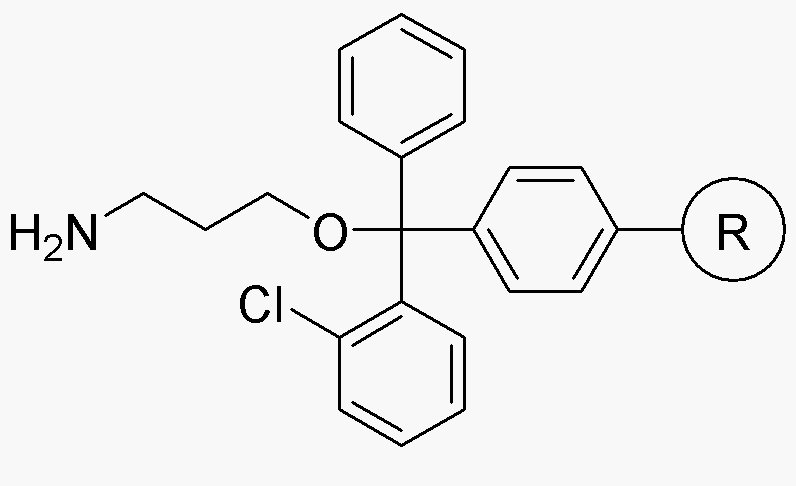b-Alaninol 2-chlorotrityl resin (0.2 - 0.4 meq/g, 200 - 400 mesh) is widely utilized in research focused on:
- Peptide Synthesis: This resin is an essential component in solid-phase peptide synthesis, allowing for efficient coupling of amino acids and facilitating the production of complex peptides.
- Drug Development: It is used in the development of pharmaceutical compounds, aiding in the creation of targeted drug delivery systems that enhance bioavailability and therapeutic efficacy.
- Bioconjugation: The resin serves as a platform for bioconjugation techniques, enabling the attachment of biomolecules to surfaces for applications in diagnostics and therapeutics.
- Analytical Chemistry: In analytical applications, it helps in the purification and isolation of compounds, improving the accuracy and reliability of analytical results.
- Research in Material Science: The resin is explored in the development of new materials, contributing to advancements in nanotechnology and polymer science.
General Information
Properties
Safety and Regulations
Applications
b-Alaninol 2-chlorotrityl resin (0.2 - 0.4 meq/g, 200 - 400 mesh) is widely utilized in research focused on:
- Peptide Synthesis: This resin is an essential component in solid-phase peptide synthesis, allowing for efficient coupling of amino acids and facilitating the production of complex peptides.
- Drug Development: It is used in the development of pharmaceutical compounds, aiding in the creation of targeted drug delivery systems that enhance bioavailability and therapeutic efficacy.
- Bioconjugation: The resin serves as a platform for bioconjugation techniques, enabling the attachment of biomolecules to surfaces for applications in diagnostics and therapeutics.
- Analytical Chemistry: In analytical applications, it helps in the purification and isolation of compounds, improving the accuracy and reliability of analytical results.
- Research in Material Science: The resin is explored in the development of new materials, contributing to advancements in nanotechnology and polymer science.
Documents
Safety Data Sheets (SDS)
The SDS provides comprehensive safety information on handling, storage, and disposal of the product.
Product Specification (PS)
The PS provides a comprehensive breakdown of the product’s properties, including chemical composition, physical state, purity, and storage requirements. It also details acceptable quality ranges and the product's intended applications.
Certificates of Analysis (COA)
Search for Certificates of Analysis (COA) by entering the products Lot Number. Lot and Batch Numbers can be found on a product’s label following the words ‘Lot’ or ‘Batch’.
*Catalog Number
*Lot Number
Certificates Of Origin (COO)
This COO confirms the country where the product was manufactured, and also details the materials and components used in it and whether it is derived from natural, synthetic, or other specific sources. This certificate may be required for customs, trade, and regulatory compliance.
*Catalog Number
*Lot Number
Safety Data Sheets (SDS)
The SDS provides comprehensive safety information on handling, storage, and disposal of the product.
DownloadProduct Specification (PS)
The PS provides a comprehensive breakdown of the product’s properties, including chemical composition, physical state, purity, and storage requirements. It also details acceptable quality ranges and the product's intended applications.
DownloadCertificates of Analysis (COA)
Search for Certificates of Analysis (COA) by entering the products Lot Number. Lot and Batch Numbers can be found on a product’s label following the words ‘Lot’ or ‘Batch’.
*Catalog Number
*Lot Number
Certificates Of Origin (COO)
This COO confirms the country where the product was manufactured, and also details the materials and components used in it and whether it is derived from natural, synthetic, or other specific sources. This certificate may be required for customs, trade, and regulatory compliance.


